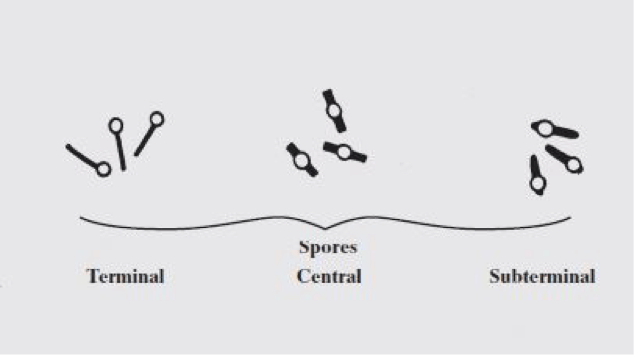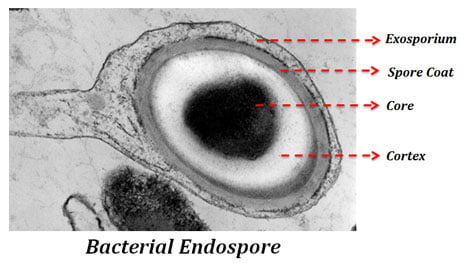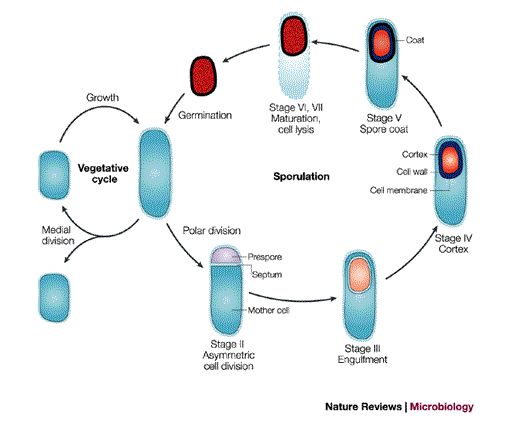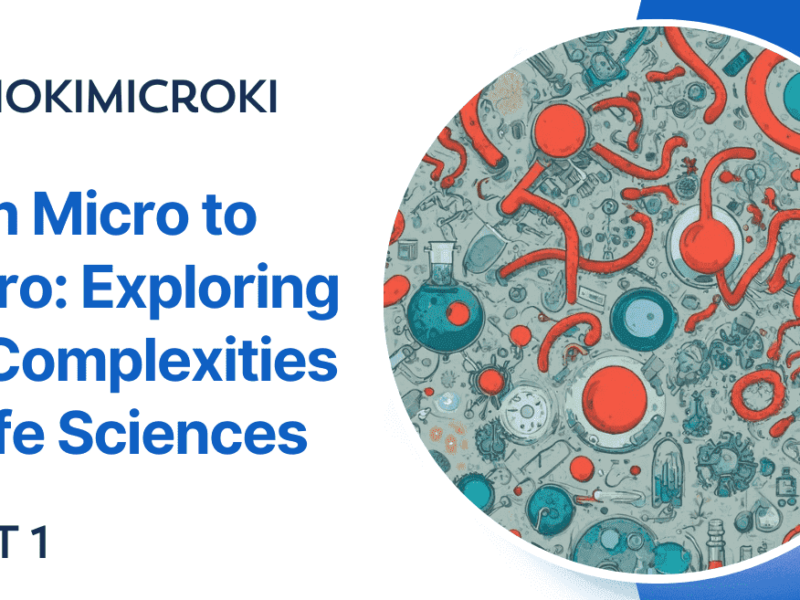Endospore is the resistant form of bacteria which is very difficult to kill.
Sporulation:
Sporulation is a spore forming process in bacteria. Spores are metabolically inactive and resistant form of bacteria. The spore becomes resistant to chemical, heat, dehydration and radiation. The spores do not multiply. The bacteria with the ability of undergoing sporulation are called as spore forming bacteria. It is similar to the hibernation process in animals. The sporulation initiates when bacteria come across the unfavourable environment or conditions like lack of essential nutrients.
The spore get resistant to chemical, heat, dehydration and radiation because different layers of coating around the core. The high content of calcium dipicolinate presents in core and stabilizes the genetic material. The DNA is also protected by DNA binding protein.
It has been observed that the size and position of endospore vary from bacteria to bacteria. The endospore could be centrally, terminal or subterminal located.

Structure of Endospore:
Structurally the spore is different from vegetative cell. To provide extra protection and resistance, the spore has additional walls of covering. The outer coat made from protein provides protection from degradative enzyme and chemical.
The outermost covering is exosporium, mostly made from protein, lipids and carbohydrates. The exosporium is not present in all sporulating bacteria. The exosporium is followed by spore coat and it made from protein. The sporecoat structure ensures impermeability of unwanted molecules. Outermembrane underlies the sporecoat whose function is not yet clear. The outer membrane is followed by cortex and it is made from peptidoglycan. The cortex protects the core which consist of the genetic material.

When bacteria founds favorable environment and it germinates from spore to vegetative, the peptidoglycan layer of germ cell wall becomes the cell wall of vegetative bacteria. The germ cell wall is followed by inner membrane, it is structurally and functionally similar to plasma membrane but it is very much rigid and less permeable as compared to cytoplasmic plasma membrane. The rigidity of the membrane makes it stringently impermeable to most of the molecules and hence the core gets sealed. The core contains genetic material, ribosome and essential proteins and enzymes. The layer by layer coating protects the genetic material and other valuable biomolecules from harmful chemicals or unfavourable environment.
To initiate the germination of endospore to vegetative cell, the germinant binds to the receptors present on the inner membrane of endospore. The sporulation is controlled and monitored by at genetic level. The transcription and translation factors acts like switch to regulated the sporulation process. The activation of these switches is carried by cascade of reaction which starts after binding of germinant to the receptor.
Example of spore forming bacteria Clostridium, Sporosarcina, Heliobacterium, Sporosarcinae, Paenibacillus, Sporolactobacillus, Desulfotomaculum.
Stages of Endospore formation:
Under favourable conditions the spore forming bacteria grow as vegetative cell, it is called as stage 0. But it initiates the process of sporulation when they encounter unfavourable conditions like lack of nutrients or accumulation of toxic material. The sporulation requires energy; it is long and time taking process and hence it is strictly regulated. Once the bacterial cell gets committed to sporulation, the bacterial cell cannot reverse the process.
In general, the bacterial cell takes 8 hours to complete the sporulation process. The committed cell is called as mother cell. The DNA undergoes replication and forms its two copies.
Stage I, the DNA forms an axial filament and extends from pole to other pole of bacteria.
Stage II: The mother cell invaginates and divides the cell asymmetrically and forms the forespore and separates it from rest of the cell.
Stage III: The mother cell further engulfs the forespore and form a cell within a cell. At this stage the forespore has two membranes.
Stage IV: peptidoglycan layer is laid down between the two membranes of forespore and accumulation of dipicholonic acid and calcium occurs and forms the cortex. Accumulation of calcium causes the dehydration of cell. In the same stage, the DNA of mother cell disintegrates.
Stage V: The protein coat is formed around the cortex.
Stage VI: The protein coat causes the maturation of the spore.
Stage VII: The lytic enzyme break opens the mother cell and matured spore gets released. When the endospore encounter the favourable conditions endospore germinates to form a vegetative cell.

Why endospore are resistant?
So far we have not been able to state the exact reason for the resistance of endospore towards heat, radiation and chemicals. The structure of endospore and its components has allowed to make a hypothesis that accumulation of dipicolinic acid associated with calcium ions make it resistant. The DNA of endospore is found to be associated with Small Acid Soluble DNA binding proteins (SASPs) that might be protecting DNA from heat, chemicals and radiation. In endospore, due to the binding of SASPs, the DNA is present in its A form. It has been also found that endospore contains several types of DNA repair enzymes that can repair DNA quickly.
References:
Prescott’s Microbiology, 6th Edition
https://micro.cornell.edu/research/epulopiscium/bacterial-endospores/
Dr. Sangha Bijekar has 9 years of Teaching Experience at University level. She loves to get engage in teaching and learning process. She is into blogging from last two years. She intends to provide student friendly reading material. She is avid Dog Lover and animal rescuer. She is learned Bharatnatyam and Katthak Dancer. She is into biking and She also loves to cook.


2 thoughts on “Structure, Characteristics & Stages of Endospore formation”